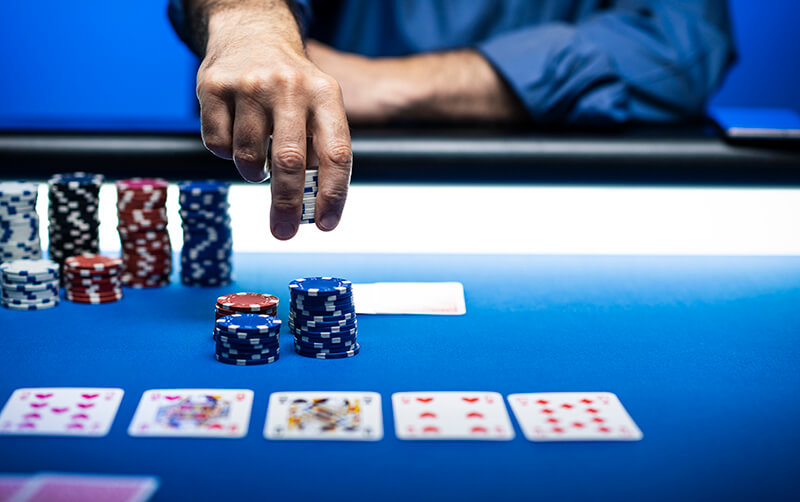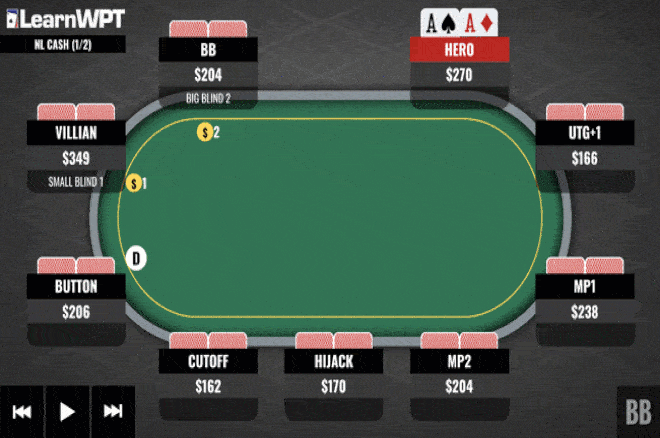Poker When To Check Raise
Learn to Play Poker in no time: Our poker tutorial is a great way to learn the card. A poker check-raise consists of checking when the action’s on you, and then raising after a player behind you has bet. Essentially it’s a trapping move, putting pressure on your opponents. This is utilized for two reasons: 1) Check-raising for value, meaning you want to get more into the pot, or 2) by bluffing you can force an opponent to.
The majority of players choose to check-raise only when they don’t have the initiative. This is because donk-betting is still considered a relatively non-standard part of poker strategy, and hence it’s very common to check to the player with initiative by default and see if he continuation bets.
Check Raise (CR) – the percentage of times a player check-raised when he had the opportunity.
This poker HUD stat helps you to figure out if a player who check-raised you has a monster hand or that’s just part of his routine online poker play. The indicator is also useful when you decide whether to bluff in position – if a pre-flop raiser who likes to check-raise checks a dry flop, be careful.
For accurate reads on check-raises you need a large sample of hands – I begin to put some trust into this stat after at least 1000 hands.
Average CR stats are in the 4-8% range, so you know that an online poker player with 2% CR has a real hand and another player with a CR of 15 often has air.
Examples using Check Raise
/For sake of simplicity we’ll assume all opponents have stacks of about 100BB/

Full ring table, we are in LP with 89s. A player in MP raises the minimum of 2xBB, we call and so does the BB. The flop comes 7 6 A of different suits. The big blind and the preflop raiser both check. Should we check or bet? Let’s look at the stats.
a) Big Blind: VPIP=22 / PFR=8 / Agg Pct=44 / Check Raise=7
PF Raiser: VPIP=19 / PFR=11 / Agg Pct=56 / Check Raise=14 / Flop C-Bet=74

We have an open-ended straight draw, which we should usually bet when in position; however there is a tricky player who can push us out of our draw if we give him the opportunity. There is a lone ace on the flop and the preflop raiser, who likes to C-Bet, knows two things: 1. that we know it is likely that he raised a hand with an ace in it, and 2. we probably would throw away preflop the hands with weak aces up to AJ and would have re-raised him with AK. Knowing all this the tricky opponent decided to check the relatively dry flop? Why?
Well, most probably he is not afraid of draws and doesn’t want to scare us away by betting his good ace. He wants to do his favorite play: check-raise.

So let’s outsmart him and take the free card.
b) Big Blind: VPIP=22 / PFR=8 / Agg Pct=44 / Check Raise=7
PF Raiser: VPIP=19 / PFR=11 / Agg Pct=56 / Check Raise=2 / Flop C-Bet=58
OK, so now the preflop raiser is a solid player who doesn’t like to play it fancy. If he had the ace he would probably had bet to avoid giving free cards. We should stick in a good bet of 2/3 the pot and be happy if the opponents fold. If one or both of them call we still can hit our draw on the turn, plus even if we don’t hit it they will likely check to us and give us the chance to draw the river for free.
Get a poker tracking program like Poker Tracker to put the odds in your favor!
What is a Check-Raise?
The Check-Raise in poker is basically checking when it is your turn to act, and raising after a player behind you opens with a bet. This is known as a trapping move.
Why Check-Raise?
There are usually TWO reasons players use this action. It’s used either as a way to add value to a hand (raising the amount of money in the pot with what you believe is the best hand), or as a bluff (making your opponent fold what you think is the best hand).
When to Check-Raise?
The Check-Raise can be used not only when playing Texas Hold’em Poker but in any poker game. Whether or not you’re playing home games, online poker, live games, cash games or tournaments, keeping this strategy in your arsenal can be useful and effective. In order to execute a Check-Raise, you must be able to Check before calling a Raise so you can only do this when you’re out of position.
How to Check-Raise?
In this guide, we will go through the basics of the Check-Raise. In order to successfully pull it off, you must first understand why you’re doing it. As mentioned earlier, there are TWO reasons to do a Check-Raise:1. To add value: You believe you’re holding the best hand and you want to increase the money in the pot2. To bluff: You believe your opponent has the best hand and you’re hoping a Check-Raise would bluff your opponent into a fold.
Value Check-Raise
In the beginning, you should start off with the Check-Raise to add value. Dip your toe into it by trying it when you believe you have the best poker hand to maximise the value of the pot. The stronger your hand, the easier it will be to execute this. Take it slow and once you’re more confident you’ll feel more comfortable with putting your chips at risk.
When you Check, your opponent will assume you have a weak hand and they will fall into a trap and make a bet in an effort to use their position to win the pot with a less than desirable hand. When it’s your turn to act and you Raise their bet, you force your opponent into a corner. There’s always the option of laying down but your opponent could make the mistake of calling with a weaker hand, or shoving all-in with a mediocre hand or a drawing hand.
Your desired outcome really depends on the size of your raise. If you over play it and make a big bet while holding the nuts you might set off some alarms and your opponents may just lay down before you can get them to contribute more to the pot. But if you make a small bet you’ll be giving opponents on a draw the opportunity to improve their hand by buying the next card. So before you decide on a number, make sure to evaluate the bet size of your opponents from the previous rounds and use that as an indication as to what amount would be ideal.
Check-Raise Bluff
The Check-Raise is one of the most powerful and effective poker moves and it has seen many victims. Take advantage of this and you may be able to get your opponents to fold even though they have a strong hand. It’s not so much about what cards you’re holding, it’s about what cards you make them believe you’re holding.
The basic strategy of betting is continuation betting (following up a pre-flop bet with a bet on the flop, regardless of whether the player has hit or not). When a player bets or raises pre-flop, it is highly likely that they have decent hole cards such as A-K-. When the flop shows 5-6-7 you can Check-Raise as a bluff by making your opponents believe you’re holding hole cards that you’re likely to call with pre-flop. In this bluff, you’re hoping to make your opponent believe that you’ve hit a set or a possible straight with suited connectors.
Once again, the size of your bet matters. Take into consideration that your opponent might be drawing and would risk their chips to buy the turn and the river. With this in mind you will be able to plan your bet size as well as your next action should you reach the turn and the river. Worst case scenario, the remaining community cards improves your opponents hand and you’ll just have to cut losses and lay down.
Other Benefits of Check-Raise
Poker Check Raise Turn

In addition to creating value and bluffing, the Check-Raise is also effective as a semi-bluff. It adds strength and value to your drawing hands. If you happen to flop a flush draw or a straight draw, try a Check-Raise instead of just checking or calling a bet. This way, you add value to the pot if in the case you do hit the straight or the flush on the turn. It might also cause your opponents to fold before you get there so it’s another way of winning the pot without hitting anything on the flop.
Incorporating the Check-Raise into your poker game will also help make you a less predictable poker player. If you’re a player who always Check-Folds or Check-Calls, it’ll be obvious that you have a decent hand when you do anything other than those actions. By mixing it up, your opponent won’t be able to know whether you have a weak hand if you simply just Check it.
If you feel that the Check-Raise strategy is too advanced, check out our poker guide on the basics of Checking in Poker or our beginners guide on How to Play Poker.

Poker Check Raise Call
Related: A Guide To Checking In Poker
Poker Texas Holdem Unlimited
Related: Poker Actions Explained